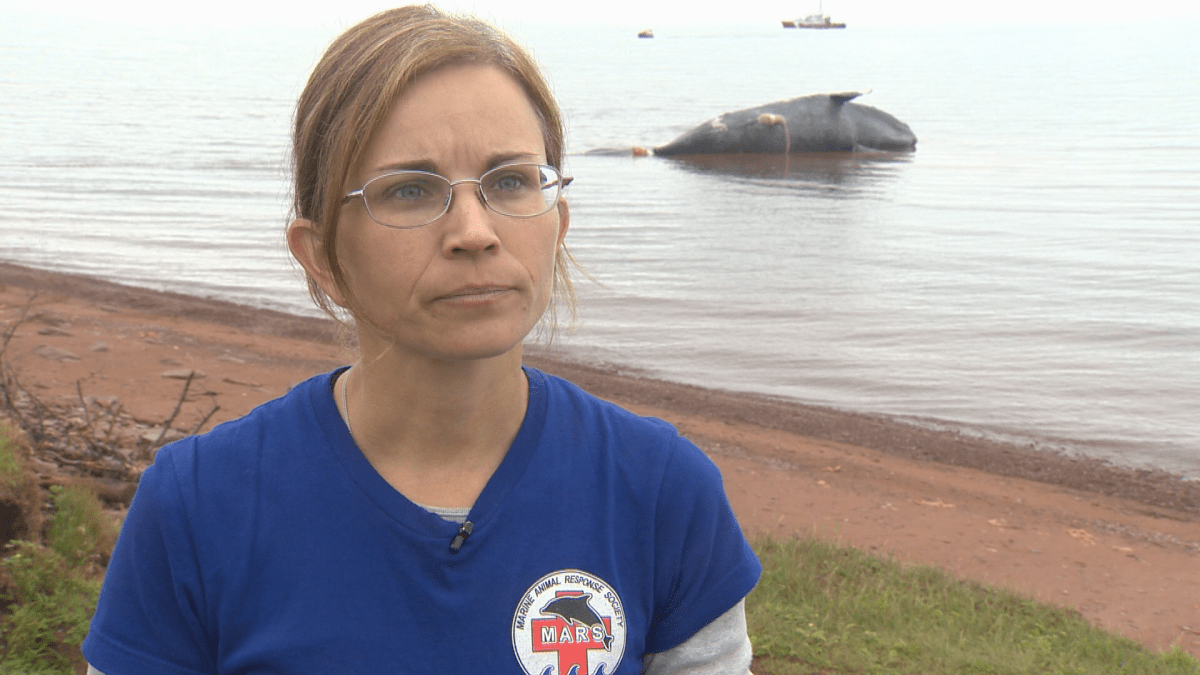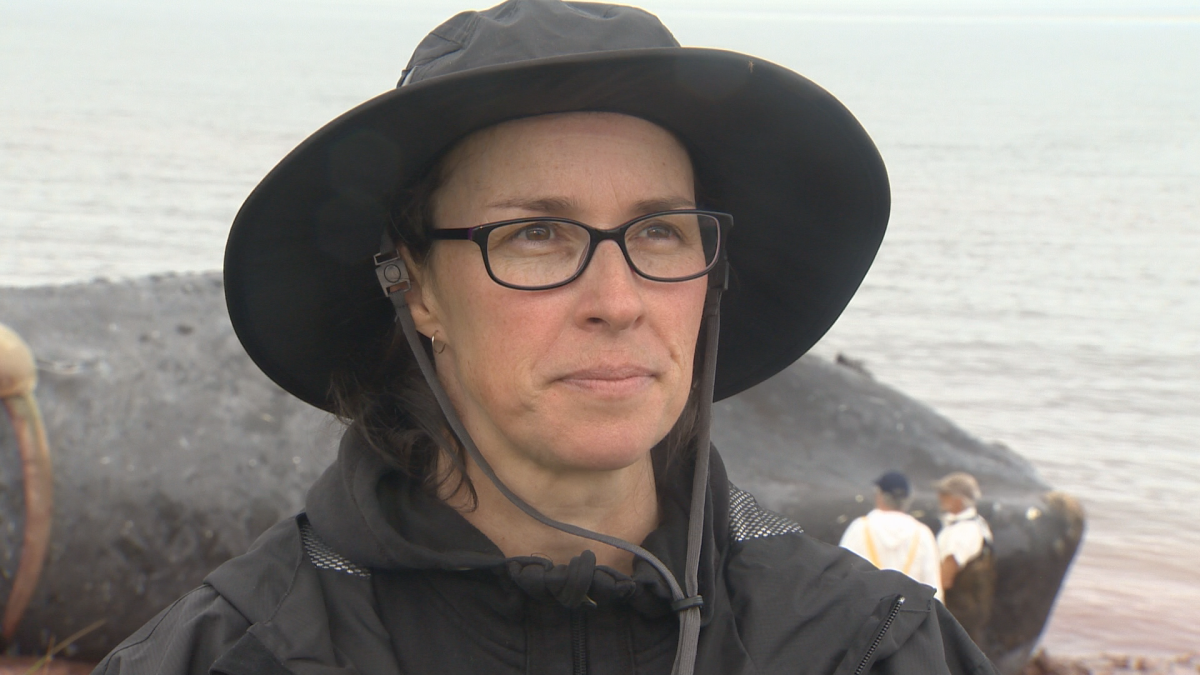As a necropsy got underway Friday on one of the North Atlantic right whales found dead earlier this week, officials are growing more and more concerned about the troubling deaths.
“We are concerned about this species,” said Megan Jones, the Atlantic region’s director of Canadian Wildlife Health Cooperative. “Obviously, it’s not a sustainable mortality rate at this moment.”
Comet, a 34-year-old male right whale, was pulled ashore on Norway, Prince Edward Island Friday. He was the third right whale found in Canadian waters.
READ MORE: 6th North Atlantic right whale found drifting off Canada’s coastline: DFO
Tonya Wimmer, the executive director of the Marine Animal Response Society, says officials found out about Comet’s death while they were performing a necropsy on Punctuation, another right whale Tuesday.

The first sighting of a dead North Atlantic right whale in 2019 was reported in early June, and since then, five deaths have been confirmed by the Department of Fisheries and Oceans as of Friday evening. Comet was the third death of the year, the department says.
“It was a wide mix of emotions of being heartbroken with what’s going on, the déjà vu of doing this yet again,” Wimmer said. “And frankly, anger that this is still going on. And it needs to stop for a population this endangered.”
“We’re sitting on the brink of extinction of this species,” she added.

Department of Fisheries and Oceans crews discovered Comet off New Brunswick’s Acadian Peninsula Tuesday.
He was the father of at least one baby, Wimmer says, and a grandfather after that.
Dozens of experts were on hand taking part in the necropsy in hopes of finding the cause of Comet’s death.
“We have a veterinary pathologist, we have veterinarians, veterinary technicians, biologists, biology technicians and an array of other support staff here to help out,” said Isabelle Elliott, a marine mammal response coordinator with the Department of Fisheries and Oceans for the Gulf region.

Get breaking National news
After examining the exterior of the whale and photographing it when it was brought ashore, crews started working on the inside of the body.
“We’re going to have a lot of people with knives, we have to remove the skin and blubber and then we remove the organs,” said Jones. “We ultimately remove the skeleton as well, in pieces to look for any fractures or anything like that.”
Officials started the necropsy at about 1 p.m. Friday, and Elliott estimated it could take 12-14 hours, so it should be completed Saturday.

After that, crews will discuss their findings. However, if those are inconclusive, it could take weeks to determine what killed Comet.
“There’s lots of different samples that are sent to labs,” Elliott said. “There’s lots of people doing research that we collect samples for so that they can continue doing their research.”
The remains of Comet will then be buried on site, near three other right whales that were found dead in 2017.
Three necropsies were done during the Canada Day weekend that year, Wimmer said.










Comments